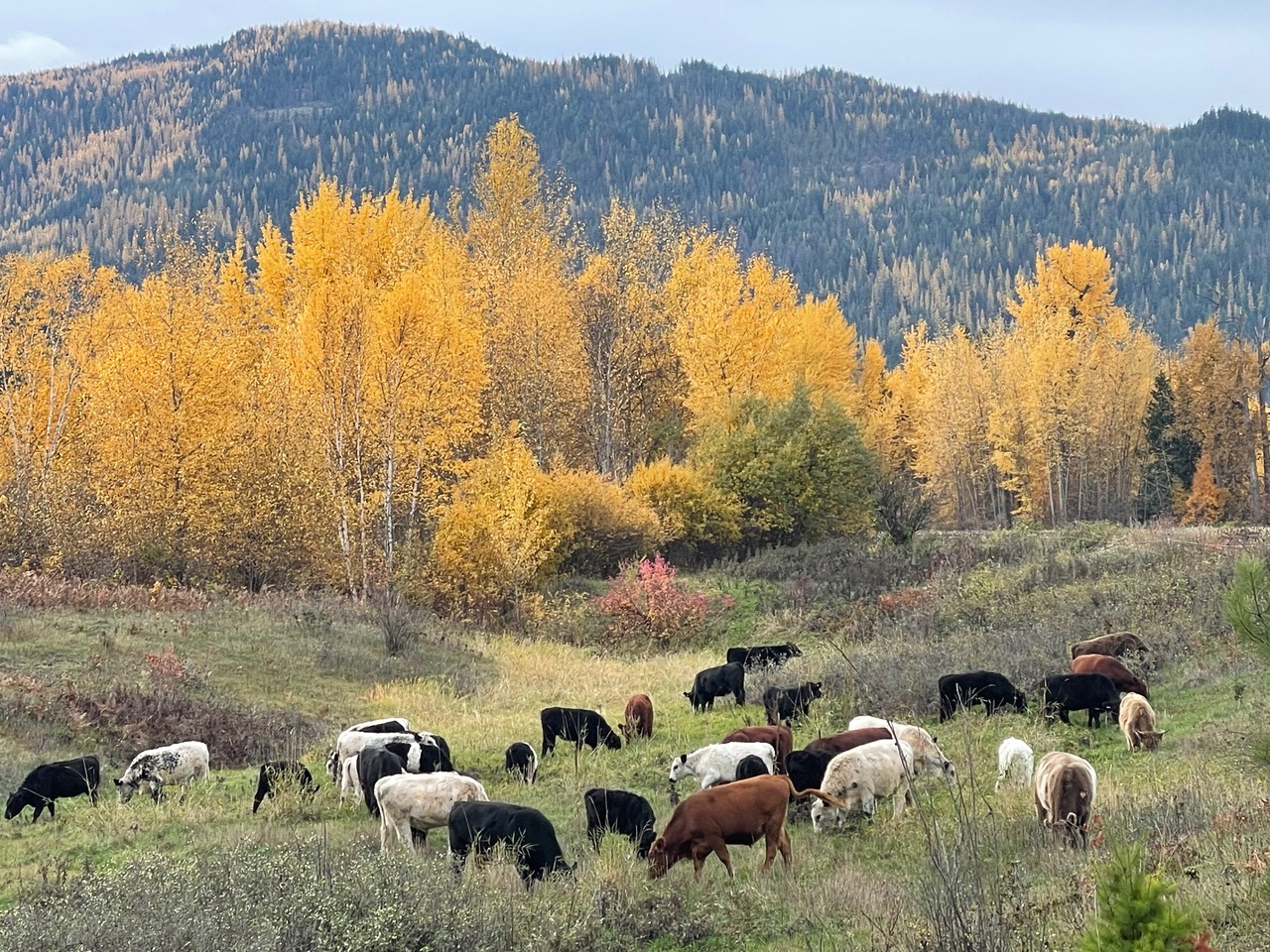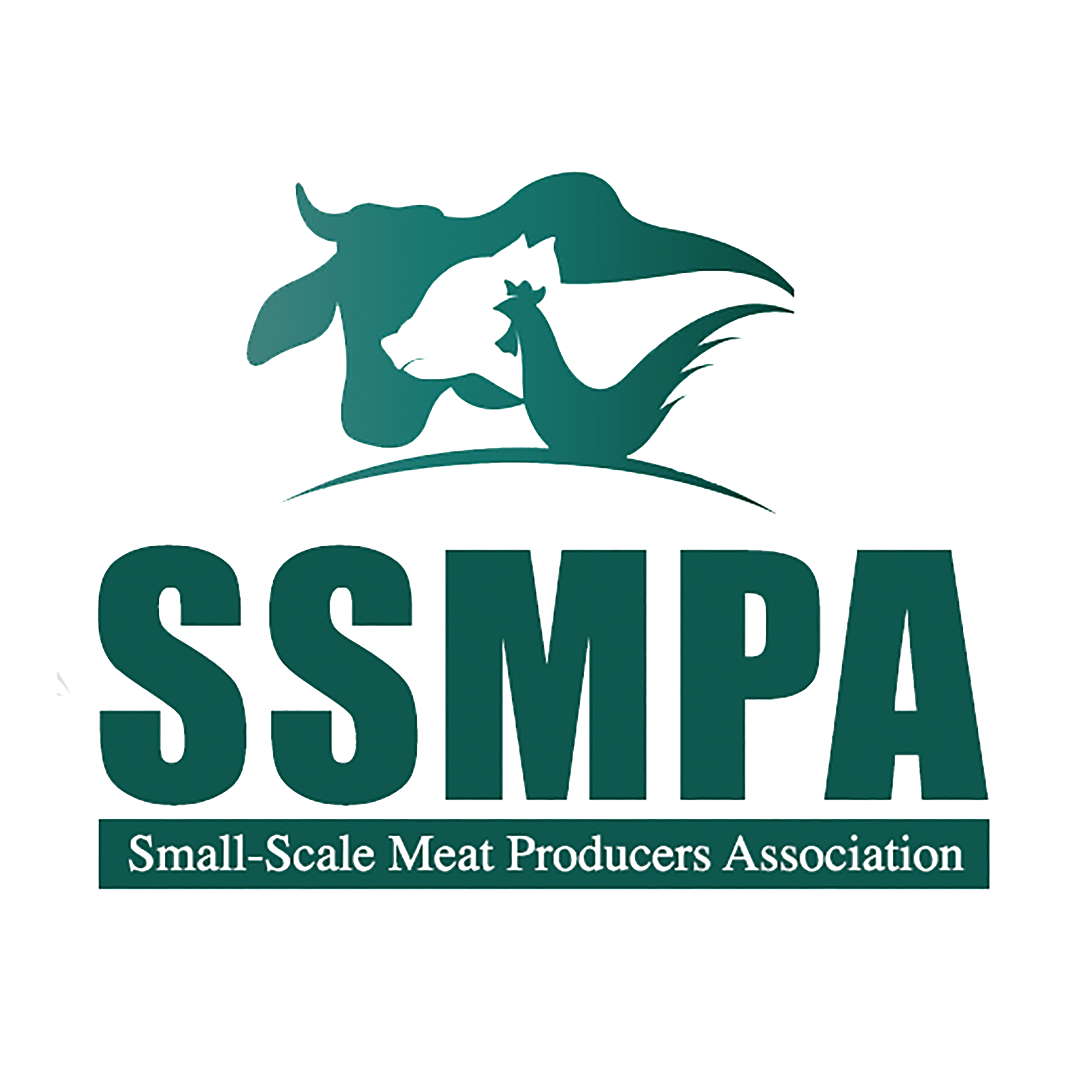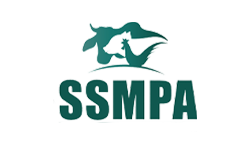
The Small-Scale Meat Producers Association (SSMPA) came together in 2017 when a group of farmers and ranchers identified that access to slaughter was the largest barrier to the growth of their businesses.
The Association officially incorporated as a non-profit in early 2018 and has been actively working to build greater stability and growth opportunities for small-scale meat producers in British Columbia.
To date, the Small-Scale Meat Producers Association remains the only organization representing producers whose needs are generally otherwise unrepresented within the existing commercial and regulatory framework.
For the past three years, we have participated in a number of Industry-led consultations and surveys. We have made presentations, provided feedback, lobbied for deadline extensions and greater inclusion in these conversations, and continuously endeavored to provide the government with the critical information they need to make meaningful regulatory changes and support this emerging, but stifled, market. Progress has certainly been disproportionate to the number of resources and time that have been expended throughout this process.
Following is a brief history of the work that has been done in this area and our contributions:
Government Consultations
2018 Class D and E Consultations
In March and April 2018, the Ministry of Agriculture, Food and Fisheries (then referred to as the Ministry of Agriculture) undertook a focused consultation in regards to the Class D and E (On-Farm Slaughter) License components to the Meat Inspection Regulation program.
According to consultation documents, the purpose of this consultation was “to help improve food security in rural communities and help more British Columbians enjoy BC beef, pork, poultry and lamb…”
The following stakeholders were asked “for feedback and suggestions on how to improve rural abattoir licensing in BC:”
- Current and expired Class D and E licence holders
- Applicants who had been denied a licence
- Applicants who had been approved by never followed through with licencing
- BC Association of Abattoirs
- BC Cattlemen’s Association
- BC Sheep Federation
- Small-Scale Meat Producers Association
- Regional Health Authorities
The SSMPA was instrumental in having this consultation process extended and opened up to a wider group of stakeholders in order to improve the quantity and quality of responses. We filled out the survey and also submitted a written response for consideration including a number of recommendations.
In June of 2018, the Ministry of Agriculture (the Ministry) issued a press release release stating that “Small abattoirs and other stakeholders have provided their ideas about how to improve provincial abattoir licensing and food security in rural communities, through a consultation process led by the Ministry of Agriculture.” The responses are summarized in a 113 page document that was released to the public
2018 Select Standing Committee on Agriculture Consultations
In spring of 2018, concurrent to the Class D and E consultations, the Ministry re-assembled a Select Standing Committee on Agriculture and issued a Discussion Paper asking for public engagement on questions provincial meat inspection including the following:
Are there options for changing regulations and policy that could increase:
• Livestock production in B.C.?
• Processing in BC of animals raised in B.C.?
• Slaughter capacity, especially in rural and remote communities?
• Access to B.C. meat for consumers, retailers, restaurants, and institutional buyers?
• Access to specialized types of slaughter to meet cultural and market-based demands?
• Standards for food safety and the humane treatment of animals?
How can access to training and development be improved in order to support the meat production sector’s need for skilled workers?
Are the regulations with respect to provincial meat production, including those under the authority of the Ministry of Agriculture, the Ministry of Health and the regional health authorities, clear and effective?
How can the provincial inspection system more effectively align with the federal meat inspection system in order to strengthen B.C.’s meat production, including the licensing of slaughter facilities (The federal government is responsible for licensing slaughter facilities that sell products outside of B.C.)?
The committee traveled around the province for in-person meetings with stakeholders from May through June and several members of the SSMPA spoke at these hearings and/or submitted written submissions.
SSMPA Recommendations to Select Standing Committee Consultations
The SSMPA submitted an extensive written submission after listening to and reading the transcripts from every public hearing. Our written submission included the following recommendations:
- Improvements to On-Farm Slaughter Licensing:
- Bring all provincial abattoir licencing under the Ministry of Agriculture.
- Extend possibility of on-farm slaughter to all areas of BC.
- Increase AU limits, potentially on a by-species or case-by-case basis.
- Remove regional district restriction for sale of farm-slaughtered products.
- Adjust Feasibility Study process to reduce municipality bias against abattoirs and to consider reasons for on-farm slaughter beyond distance to existing abattoir.
- Improve oversight of small-scale slaughter facilities, including meaningful inspections and required test kills.
- Increase access to training for small-scale operators, including training that is available to A/B operators through the BC Association of Abattoirs.
- Introduce changes that make mobile abattoirs (slaughter trucks) a feasible and legal option for on-farm slaughter.
- Increased Opportunities in Supply Managed Commodities:
- Direct the Marketing Boards to increase the number of birds allowed for Small Lot Permit Grower / Direct Vendor programs
- Carefully review New Entrant programs to assess the effectiveness and integrity of the process in meeting market demand for specialized local meat production.
- Determine whether changes are needed in order to encourage viable slaughter and processing options for Permit producers and small quota holders.
- Access to Funding:
- Promote existing funding sources that would benefit small-scale meat producers.
- Make funding available for projects critical to the goal of increasing availability of locally-produced meat, such as abattoir improvements, facility upgrades, and training programs.
- Enhanced Communications:
- Schedule consultations to coincide with the slower season for farmers.
- Utilize the newly-formed Small-Scale Meat Producers Association to gather feedback when needed and disseminate information of importance to producers.
- Facilitate improved relations between on-farm abattoirs, A/B operators and small-scale livestock producers to overcome challenges, improve operations and meet market demand together.
- Support the Small-Scale Meat Producers Association in organizing and becoming the voice of this promising emerging industry.
The Committee released its findings in a report including 21 recommendations on September 28:
Recommendations from the Select Standing Committee on Agriculture, Fish and Food to the Legislative Assembly
Inspection and Enforcement
- Encourage the Ministry of Agriculture to look for ways to improve cross-ministry
coordination, collaboration and communication to expand current meat inspection and enforcement services to realize efficiencies, minimize risks, ensure consistency, simplify practices for producers and processers, as well as share best practices and enhance skills. - As a way of supporting small-scale meat producers and processors, require the Ministry of Agriculture (or their designate) to increase resources to enable engagement with Class D and E licensed facilities to ensure increased inspections at those facilities, including slaughter.
- Help Class D and E licensed producers reach markets closer to home by investigating alternative boundary restrictions for sales, other than regional districts.
- Work with relevant authorities to address the gap that currently exists in inspection and enforcement related to livestock sales or auctions to enable provincial inspectors to enter a public livestock sale yard to test animals on a regular basis.
- Investigate options to expand use of current technologies to extend or implement virtual inspections in communities, where available.
- Confirm that regular reviews of the inspection system occur, in consultation with producers and processors, to ensure ongoing opportunities for assessment and improvement of the current system.
Food Safety
- Provide ongoing training and education opportunities, including during inspections, to producers and processors with respect to food quality and safety, as well as the humane treatment of animals, to share knowledge and awareness of current best Practices.
Humane Treatment of Animals
- Ensure there are sufficient resources available for enforcement to ensure compliance in relation to regulations regarding the humane treatment of animals by those engaged in all aspects of meat production and inspection.
Education and Training
- Offer additional opportunities for professional or post-secondary training programs to encourage new entries into the meat production and processing industries, and to provide upgrading or new skill development for those already working in these industries to promote career longevity.
- Ensure that information regarding safe slaughtering techniques, safety standards and best practices is made available in a variety of formats (including online or through a correspondence course model), is kept up to date, and is supported with in-person training and slaughter opportunities.
Recruitment and Retention of Skilled Labour
- Look at options to develop or enhance existing apprenticeship, mentorship and co-op training programs, including opportunities at the high school level, to help build workforce capacity and transfer valuable institutional knowledge. [See recommendation #16 under Slaughter Capacity]
Access to Farmland
- Ensure that sufficient productive agricultural land is and remains available for livestock grazing in order to encourage increased livestock and local food production capacities.
- Strongly promote the availability of productive Crown land within the Agricultural Land Reserve for livestock grazing purposes in an urgent manner, particularly in light of the devastation caused by wildfires and other natural disasters.
Marketing and Promotion
- Make sure that the “Buy BC” promotional marketing campaign highlights the benefits of purchasing local meat products to encourage British Columbians to support local producers and retailers.
Financial Considerations
- In partnership with the federal government, investigate options to develop a three- to five-year averaging formula in relation to natural disaster compensation for those who derive less than 50 percent of their income from farming.
Slaughter Capacity
- Provide additional training for finishing of meat products to producers to help alleviate capacity issues by extending the slaughter season. [See recommendation #11 under Recruitment and Retention of Skilled Labour]
- Reduce current travel time restrictions to one hour between Class A/B licensed facilities and Class D/E licensed facilities to help alleviate local slaughter capacity challenges and increase local livestock production.
- Review mobile slaughter regulations to look for opportunities to make mobile slaughter more accessible to small producers in B.C. without compromising food safety or the humane treatment of animals.
- Cooperate with producers and processors to address seasonal capacity issues by expanding business opportunities to maintain a viable living, including increasing the production of value-added specialty products and services
New Farmers
- Through the Ministry of Agriculture, work with community and industry organizations, such as 4-H, Young Agrarians and Farmers Institutes, to continue to promote interest and engagement in the industry through local agricultural fairs.
- Create a comprehensive and accessible reference, to be made available through the Ministry of Agriculture in a variety of formats, to highlight existing educational and other programs to ensure that those interested in entering the industry can find the information they need.The Ministry accepted all 21 recommendations of this report.
Key Findings
The following are the key findings in the Select Standing Committee on Agriculture, Fish and Food report relating to on-farm slaughter:
- No slaughter facilities in B.C. are currently classified as high risk, and only 20 percent are assessed at moderate risk.
- Regional Health Authority representatives informed the Committee that they were not aware of any disease outbreaks related to public health that had been traced back to a Class D or E licensed facility.
- The Enforcement Officer noted that five files have posed health risks, all of which were illegal, unlicensed operations.
- Committee Members acknowledged that the systems in place to ensure food safety and product quality appear to be working well and they are proud of the work currently being done.
- Committee Members acknowledged that allowing more farm-gate sales (currently Class D and E) could be beneficial in permitting producers the opportunity to diversify their products, realize additional income in slower seasons, and build relationships with local customers, either through sales at local farmer’s markets or through direct consumer transactions on their farms.
- The Committee discussed various options to identifying opportunities to approach mobile slaughter differently, to make this service more affordable and accessible to small producers. This could potentially relieve variable pressures on the system, without compromising food safety and the humane treatment of animals.
2019 Local Governments Class D Consultation
In 2019, the Ministry announced that they would be consulting with local governments for a six- week period starting on June 3rd. They were looking for “proposals for new class D regions or sub-regions; and designation of new regions or sub-regions.”
The SSMPA learned of this consultation and lobbied for an extension of the timeline given that many municipal government workers were on vacation and/or unfamiliar with Class D licenses. The deadline was extended to October 1st.
2020 Intentions Paper on Rural Slaughter Modernization
In September of 202, the Ministry issued an Intentions Paper on Rural Slaughter Modernization as “part of the ongoing work to assess opportunities for improvement and positive changes that will strengthen our provincial food system and ensure a strong and growing local meat industry in B.C. for many years to come.”
The Intentions Paper indicated that a number of regulatory and policy changes were being considered and solicited comments and submissions. The deadline for comment was October 19th.
The Intentions Paper made reference to a 2009 Risk Assessment. SSMPA requested a copy of this document and after a five month process through Freedom of Information, was finally granted access to this document in Feb 2021.
The following recommendations were submitted by the SSMPA:
Adopt and strengthen an extension model in line with the stated goal of ‘education before enforcement, and ensure that the level of oversight, including inspections and reporting requirements, matches the risk level of a given operation.
We have seen the negative impact that regulatory change can have on our sector with the tremendous loss of meat processing capacity and livestock production beginning with changes introduced in 2004. An update of the Code of Practice that will “establish higher standards” must create opportunity rather than restrict it, and improve systems without adding excessive costs and burdens. It is critical to remember that though there are many reasons to change our regulations and policies, including mitigation of risk, there have not been food safety issues or negative public health outcomes as a result of our current system. SSMPA looks forward to participating in the update of a risk assessment, which will help ensure that oversight matches risk at different scales of production.
Create maximum flexibility in the methods of providing oversight to slaughter facilities.
Video inspections, tele veterinary consultations, contracted inspections and periodic slaughter inspections are all good opportunities. The type of inspection could vary based on the scale of the facility, the booked volume and availability of inspectors. As more slaughter facilities are developed around the province, especially remote and low-capacity facilities, the cost of the current inspection system will become overwhelming, and the cost per head of inspection at these facilities cannot be justified given the low risk to consumers.
Replace Class E licence with a broad Farmgate Slaughter Exemption.
Contrary to information presented in the Intentions Paper, most other provinces and territories allow uninspected on-farm slaughter of animals sold whole and directly to a single end consumer, typically by exempting this type of arrangement from the applicable regulation. In our research, possibly notable in disallowing any sale of uninspected meat are Ontario and Prince Edward Island. Some jurisdictions have additional caveats or requirements: require the animal to have been owned by the producer for a length of time (e.g. Nunavut), only permit the sale of uninspected poultry (e.g. Manitoba), or require licensing and reporting (e.g. Alberta). Exempting single-customer farmgate sales would recognize the right of an informed consumer to choose farm-slaughtered meat, and would provide an opportunity to provide resources and oversight to operations currently happening illegally and underground. Some requirements in terms of premise registration or reporting would be reasonable, and restrictions on further processing by the producer could be warranted, but this is a low-risk and high-transparency arrangement that requires minimal oversight.
Redevelop the Class D uninspected slaughter licence into a more flexible, more useful Limited Custom Slaughter Licence.
Producers who wish to sell portions of carcasses, sell products at retail or to other users such as meat shops or restaurants will need to slaughter livestock in a licenced slaughter facility. A category of licensed facility with less requirements and less oversight than a Class A or B reduces the barrier to entry for lower volume and lower risk slaughter operations. This can be an important step in the growth of new facilities, allowing operation at an economically viable scale without excessive costs. It also reduces the cost of administration and oversight for the Ministry, avoiding unnecessarily high per-head inspection costs for these low-volume operators, many of whom would be located in rural and remote areas.
The redevelopment could include expansion beyond on-farm slaughter, and include the flexibility to address different levels of risk. Facilities slaughtering for multiple producers could be allowed on a case-by-case basis in areas where there is a demonstrated need for additional capacity, or where producer needs are not being met. Additional oversight requirements could apply to operators slaughtering livestock for multiple farms.
Candidates for this class of licence include the following:
- Producer slaughtering their own livestock on-farm
- On-farm abattoir slaughtering for multiple producers
- Off-farm abattoir slaughtering for multiple producers
- Existing operating Class A or B facility that falls below a risk threshold
- Non-operational facility that is not economically viable as a Class A or B
- Mobile slaughter operation
As the Ministry improves oversight of these facilities, opportunity should increase. Availability of this class of slaughter licence should be expanded to all areas of the province, and all sales area restrictions should be removed. Risks to public health will be mitigated by the improvements to the Rural Code of Practice, development of individualized standard operating procedures and food safety plans. Risk will also be mitigated through limits to the volume of animals slaughtered, which should be assigned on a case-by-case basis by the Meat Inspection Team upon review of the individual application, with an opportunity to reassess annually.
Facilitate the development of new abattoirs and the growth of existing facilities where appropriate.
Bringing oversight of all slaughter facilities under the Ministry of Agriculture is a welcome step that simplifies and clarifies the system and will improve communication. It is our hope that this will also streamline the path to growth for enterprises that see opportunity in increasing their volume or serving other producers. However, we must recognize that the goal is to right-size a facility within a framework that matches oversight and requirements to the level of risk, not to climb a regulatory ladder. A federally-inspected plant is not better than a provincially-inspected plant, and likewise provincially-inspected slaughter is not better than inspection-exempt farm slaughter. This is a continuum of oversight across varying levels of risk based on volume and distribution, type of manufacturing and facility-specific factors. With the responsibility of regulation comes the responsibility to facilitate the growth of this sector. The Ministry should allocate resources to support the development of the infrastructure and human capital required to realize these goals.
Investigate and discuss possibilities for increasing access to meat processing (cut and wrap, value-adding).
The increase in local production and slaughter of livestock must be matched by an increase in the capacity for further meat processing in order to meet the growing consumer demand for local meat products. Consideration should be given to whether the Ministry of Agriculture could provide the necessary oversight to meat shops primarily handling meat slaughtered under provincial licensing, such as the processing side of meat shops associated with slaughter facilities or those receiving carcasses directly from farms. The Ministry should provide information, assistance and funding to this effort.
Assist the SSMPA and aligned groups in efforts to attain liability insurance coverage for businesses engaged in licenced and legal slaughter, processing and sale of meat.
Many of our members struggle to obtain liability insurance despite following all regulations and operating legal businesses. This is primarily due to a lack of understanding of the level of risk from the perspective of underwriters. The SSMPA will need assistance in providing the relevant information to potential insurers as we attempt to rectify this situation. We hope that this restructuring and the upcoming risk assessment will be useful in this regard.
Government Actions That Have Increased Slaughter Capacity
- Allowing Class E establishments within one-hour travel time of a licensed Class A or B facility, instead of the two-hour limit that was in place before May 2019.
- Designating three new areas for Class D rural slaughter licensing: Alberni-Clayoquot Regional District, Electoral Area D in Regional District of Central Kootenay and Electoral Area H in Regional District of Fraser-Fort George.*
*Impact on slaughter capacity unlikely to be significant given that the total population of these regions combined makes up 0.003% of the population of British Columbia. Total Population Data for these regions:
- Alberni-Clayoquot Regional District outside of the City of Port Alberni: 13,303
- Electoral Area D in Regional District of Central Kootenay: 1413
- Electoral Area H in Regional District of Fraser-Fort George: 1586
Government Actions Related to Meat Production That Have Not Increased Slaughter Capacity
- All slaughter activity licensed under the Meat Inspection Regulation for Class A, B, D and E meat-slaughter licences will be regulated under the Ministry of Agriculture effective Dec. 1, 2020. Previously, regional health authorities had responsibility for Class D and E licences.
- Delivering a series of food safety and animal welfare training workshops for rural producers and existing Class D and E license holders.
- Highlighting local meat products through the Buy BC program.
- Funding food safety and traceability programs for meat producers.
- Implementing a mandatory Premises ID Registration
- Introduction of a revised mandatory training program for Class D and E licensees.
References
2009 Risk Assessment
https://drive.google.com/file/d/1MH_eEn92iITx-E9r6XP-Em-W9-vViFx7/view?usp=sharing
2018 Class D & E License Consultation: Summary of Survey Responses
https://www2.gov.bc.ca/assets/gov/farming-natural-resources-and-industry/agriculture-and-seafood/food-safety/meat-inspection/delicenceconsultation2018.pdf
2018 Response to Ministry of Agriculture’s Class D/E Survey/Consultation Process
https://smallscalemeat.ca/2018/04/11/response-to-ministry-of-agricultures-class-d-e-survey-consultation-process/
2018 Select Standing Committee Report on Local Meat Production and Inspection in British Columbia
https://www.leg.bc.ca/content/CommitteeDocuments/41st-parliament/3rd-session/aff/Rpt_AFF_LocalMeatProductionAndInspection_2018-09-28.pdf
2020 Intentions Paper on Rural Slaughter Modernization
https://engage.gov.bc.ca/app/uploads/sites/121/2020/09/ministry_of_agriculture_intentions_paper_rural_slaughter_modernization.pdf
2020 SSMPA Public Response to Intentions Paper
https://smallscalemeat.ca/2020/11/15/ministry-of-agriculture-intentions-paper-response/
2020 SSMPA Feedback to Ministry of Agriculture in Response to Intentions Paper
https://smallscalemeat.ca/2020/11/16/recommendations-to-ministry-of-agriculture-in-response-to-september-2020-intentions-paper/


